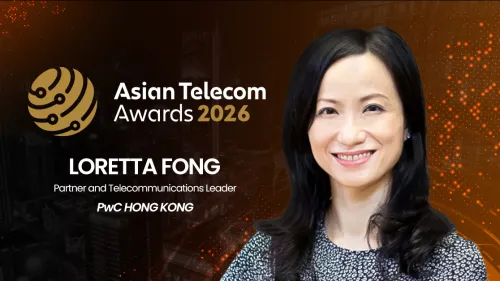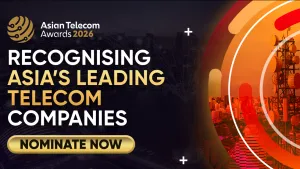
Establishing proper controls, safeguards ‘crucial’ to fend off cyber attacks, says PwC leader
This comes as corporations are now compelled to incorporate a digital solution and offering of their products and services.
Wilson Chow currently heads PwC’s global technology, media and telecommunications (TMT) industry practice, where he is also the TMT industry leader for the firm’s Mainland China and Hong Kong practices.
He has been working in the public accounting practice in the said areas for more than 30 years. He has extensive experience in providing assurance and advisory services to companies in the TMT industry, ranging from start-ups to global tech giants, for capital market transactions, assurance engagements, systems and controls advisory, and deals.
Chow has also been leading and supporting the PwC global network across all lines of service— Assurance, Taxation and Advisory—to provide one-stop professional solutions and services to companies in the TMT industry, as well as to clients looking to reinvent themselves through digital transformations.
He is a practising member of the Hong Kong Institute of Certified Accountants, the China Institute of Certified Public Accountants, and the Association of Chartered Certified Accountants.
With his strong experience in the TMT industry, his main focus is on whether the technology being deployed by organisations in their products and services has embraced the latest disruptive technologies, be it on a stand-alone basis or in a combination of several disruptive technologies.
“The digital knowledge and capabilities of corporations are required to be strengthened or enhanced. Companies need to invest in technology and upskill the technical capabilities of their workforce,” he said.
Speaking with Asian Telecom, Chow shared his insights on the state of the telecom industry as well as on how businesses can protect their assets in the midst of the proliferation of cyber attacks.
How has Asia’s telecommunications landscape evolved in the past year? Are there any trends to watch out for?
The successful establishment of the 5G mobile telecommunication network in most Asian countries has paved a solid foundation and formed a catalyst for the commercial applications of many emerging technologies (such as AI, VR/AR, Robotics, IoT, etc.). The high-speed and more efficient mobile communication network has also significantly enabled the growth and development of video streaming operations, KOL type of direct broadcasting, and other media and entertainment businesses in Asia. 5G has also played a crucial role in maintaining connectivity of people, say working from home; attending online education classes; and even enjoying home entertainment, etc. when mobility is restricted under various COVID control measures imposed by different governments.
We believe that new use cases and new business models will continue to emerge from 5G deployment and the continuous improvements of the network. It is expected that 5G will continue to form a strong driving force behind various digitisation initiatives of governments, enterprises and individuals, and other advancements in online/mobile solutions for enhancing the consumer experience in e-commerce and media/entertainment businesses.
The 5G network will also speed up the rise of Web3 technology which supports the metaverse initiatives. Web3 is believed to open doors to the next level of industrial development. The immersive consumer experience to be offered by the metaverse and the encryption and decentralisation functions of the blockchain which supports the operations of the metaverse could create new digital use cases and business models for corporations to monetise their products and services, enhance the consumer experience, as well as enhance their operational efficiency.
As the latest technologies redefine industries and businesses, what do you think the telecom industry needs to improve on in this realm?
Digital transformation can be achieved in two streams, both internal and external.
For internal transformation, telecommunications industry players are migrating their systems and processes to digital platforms, so that the humongous volume of data processed by them could be analysed effectively with business insights. Digitisation also helps telecommunications players to be more cost-efficient.
For external transformation, telecommunication players have been actively engaged in offering integrated digital solutions to their customers such as cloud and other SaaS and PaaS services.
To distinguish themselves from other competitors, telcos may also deploy state-of-art technology by forming partnerships or alliances with other corporations to offer a B2B2X type of business model to offer joint products and services with another business partner to the end users in order to capture the market upside.
What do you think are the skills and qualities most desired to be able to understand and address client needs nowadays? What can industry leaders do to influence their employees to exemplify this?
As consumers and customers are moving digital, corporations and enterprises are required to incorporate a digital solution and offering of their products and services. As a result, the digital knowledge and capabilities of corporations are required to be strengthened or enhanced. Companies need to invest in technology and upskill the technical capabilities of their workforce.
When services and products are offered via digital means, a lot of customer information and data is generated in digital form and their preferences can also be captured in a digital format. The useful customer data would form an excellent source for companies to accurately direct their resources to customise their products and services to best serve their needs. In addition, companies can also utilise the data to develop targeted marketing and advertising strategies in order to optimise the return on marketing spend. As a result, corporations and companies have to develop effective data mining and data analytic capabilities to enable them to effectively and efficiently capture and process the data to derive useful information.
Generation Z is growing into the major consumer group, and they are so used to utilising the digital means of consumption and spending they also care about their online identities and well-being. The metaverse created under Web3 technology would uplift and enhance their immersive digital experience to the next level. Consumers can also be represented in their avatar identities to navigate in the metaverse and undertake business transactions, which would create new channels and opportunities for product/service monetisation for companies. Therefore, companies have to formulate a metaverse/Web3 strategy to utilise the advanced immersive digital and web technologies to cope with the changing user behaviours and create new revenue streams.
With the proliferation of cyber security threats across the globe, how do you think telecom operators can protect their assets and prevent these threats?
Given telecom operators operate the network and infrastructure for massive data traffic, no matter wired or mobile, to be undertaken for communication and other business and personal usages, they must establish the proper controls and safeguards to fend off cyber attacks and protect their assets and data.
There are preventive and detective types of controls that telecom could adopt and implement in order to mitigate the risks.
For preventive types of controls, telecom operators have to build secured infrastructures (hardware and software), firewalls, and backup plans. They also need to implement proper internal controls and procedures so that the data generated in the operations are properly captured, processed, stored/archived and recovered.
For detective types of controls, corporations may undertake self-hacking tests and ethical hacking from outsiders to identify the existence of any loopholes in their systems and controls, so as to ensure that their systems and networks are free from hostile hacker attacks.
What are the qualities you look for in judging this year’s Asian Telecom Awards?
Digitalisation and technology are believed to be the two important growth engines to uplift Asia’s economic growth to the next level. As one of the judges of the Awards, I focus on whether the technology being deployed in the products and services has embraced the latest disruptive technologies, no matter on a stand-alone basis or in a combination of several disruptive technologies.
I also put weight on whether the application is scalable and could assist corporations and businesses to achieve optimal outcomes and results. Finally, I treasure how feedback and customer experience rendered can be captured and analysed, and how the products and services can be refined to cater for the changing business and customer needs, given commercialisation is important.














